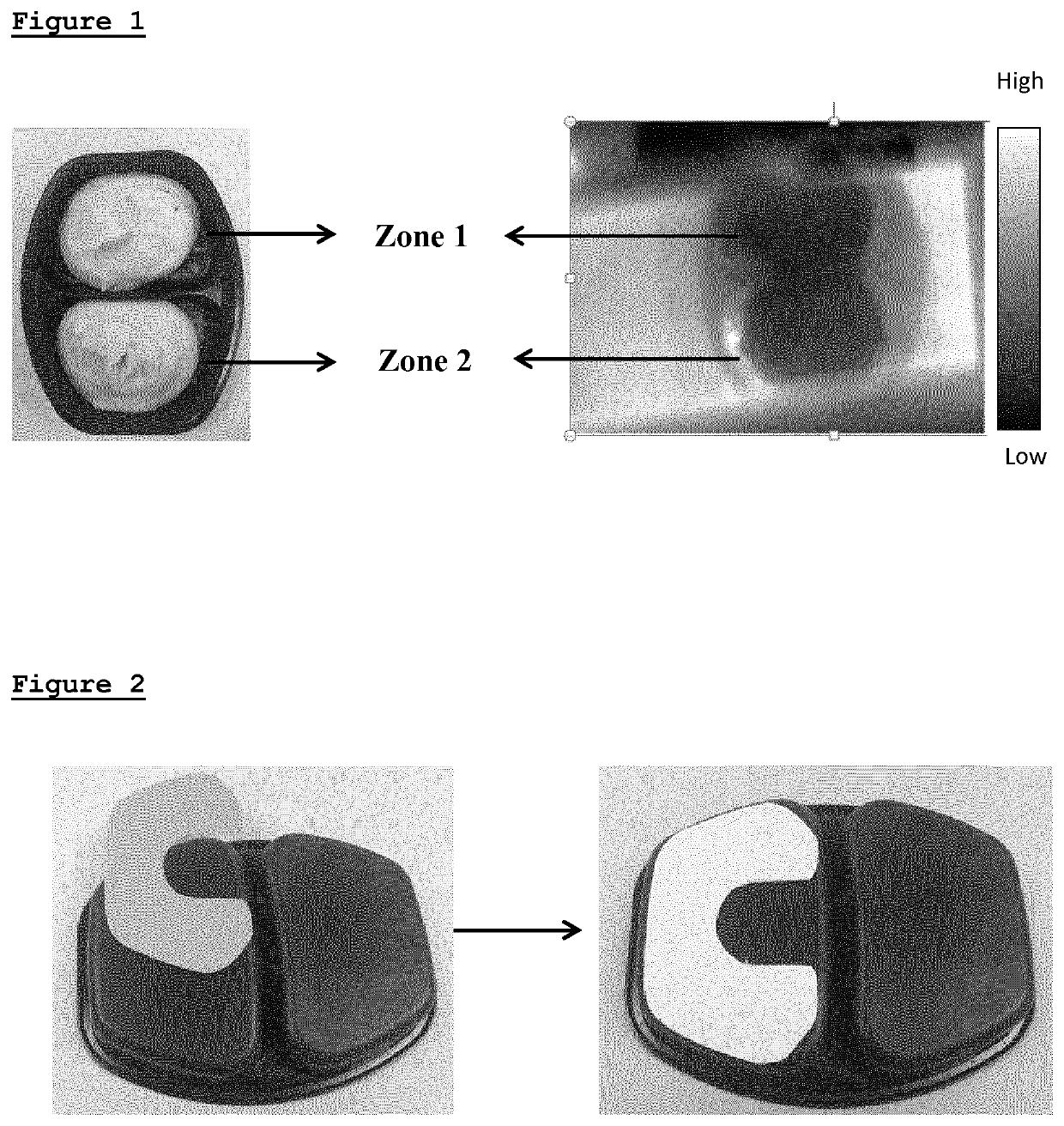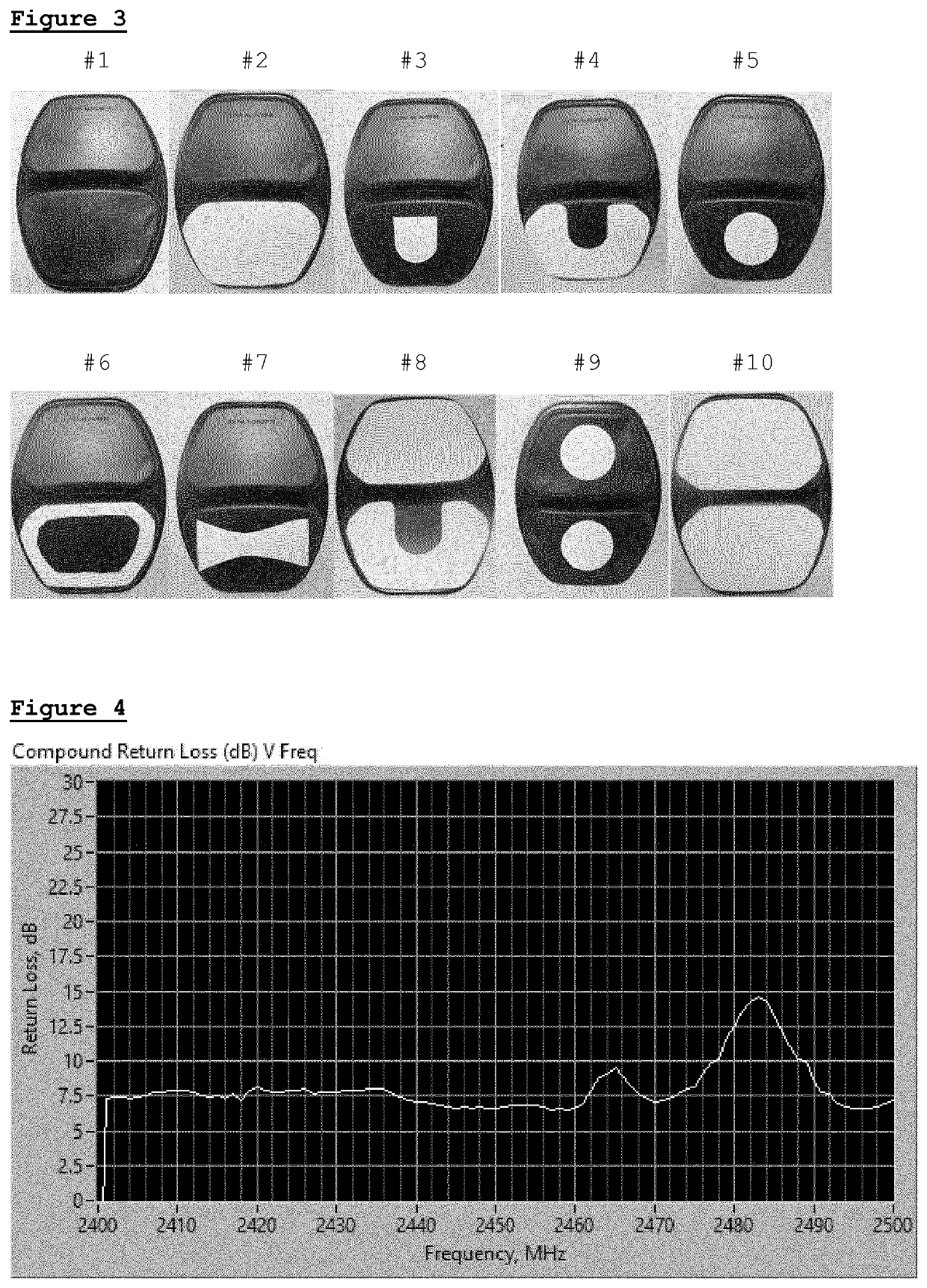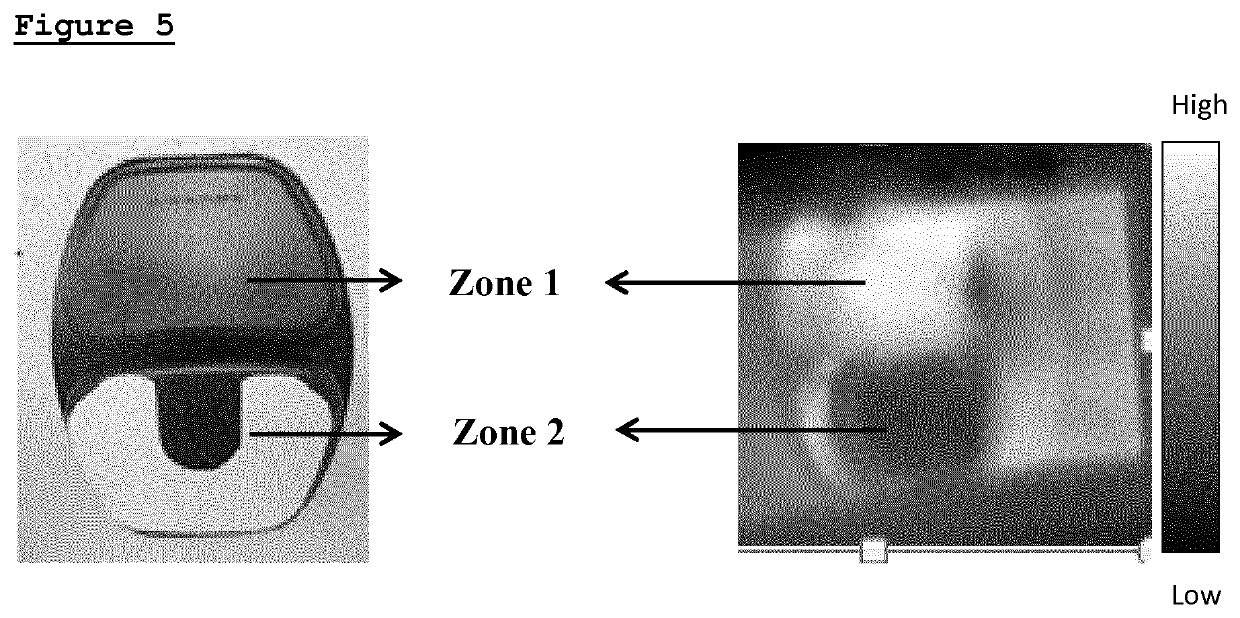Packaged food product for solid state microwave oven
a solid-state microwave oven and food product technology, applied in the field of packaged food products, can solve the problems of uncontrollable frequency of magnetrons, insufficient energy supplied to each compartment, and often overcooked vegetable portions
- Summary
- Abstract
- Description
- Claims
- Application Information
AI Technical Summary
Benefits of technology
Problems solved by technology
Method used
Image
Examples
example 1
[0033]Reference Sample Before Microwave Heating.
[0034]Equal quantities of mashed potato (132 g±2 g) were placed in a two compartment tray and frozen to −18° C. The two compartment tray was a common tray as used commercially for frozen meals. It had a dimension of ca. 18.4 cm to 14.6 cm and a height of ca. 3 cm. It was made of Crystallized Polyethylene terephthalate (CPET) and had a material thickness of 0.5 mm. FIG. 1 shows the nomenclature used for the two zones / compartments of mashed potato and their corresponding infrared images taken using a FLIR Infrared Camera. It can be seen that the mashed potatoes are about equally well frozen in both compartments.
example 2
[0035]Test Samples with a Susceptor Fixed at the Bottom of the Tray in Zone 2.
[0036]Susceptors used in this study were of a very thin metal layer applied to the non-food contact side of the film and laminated to a paper based substrate (from Lorence & Pesheck, 2009). Susceptors in certain selected designs were then fixed to the outer bottom at zone 2 of same CPET trays as described in Example (FIG. 2). The susceptors were fixed to the trays in such a way that the metal part of the susceptor faced the surface of the tray.
[0037]Different designs and forms of the susceptor as shown in FIG. 3 were used and tested in a solid state microwave oven. For this, each sample tray was filled with mashed potatoes as described in Example 1 and thereafter frozen at −18° C. Thereafter, the samples were put into a solid state microwave oven, where the oven system identified first the frequency with the highest energy absorption, i.e. the highest return loss. One example is shown in FIG. 4 where a hig...
example 3
[0044]Further packaged food products of the present invention can be produced with using trays having for example the following thermal resistance value R of the package tray between the susceptor and the food as specified in Table III.
TABLE IIIType of package tray:R value of package trayCPET Tray + PET film of0.001232-0.000462SusceptorPP Tray + PET film of Susceptor0.001316667-0.000594773Pressed Paper tray + PET film0.002697102-0.002667935of susceptorCPET Tray + Paperboard of 0.00273142-0.001990587SusceptorPP Tray + Paperboard of0.002816087-0.00212336 SusceptorPressed Paper Tray + Paperboard0.004196522of Susceptor
PUM
 Login to View More
Login to View More Abstract
Description
Claims
Application Information
 Login to View More
Login to View More - R&D
- Intellectual Property
- Life Sciences
- Materials
- Tech Scout
- Unparalleled Data Quality
- Higher Quality Content
- 60% Fewer Hallucinations
Browse by: Latest US Patents, China's latest patents, Technical Efficacy Thesaurus, Application Domain, Technology Topic, Popular Technical Reports.
© 2025 PatSnap. All rights reserved.Legal|Privacy policy|Modern Slavery Act Transparency Statement|Sitemap|About US| Contact US: help@patsnap.com



